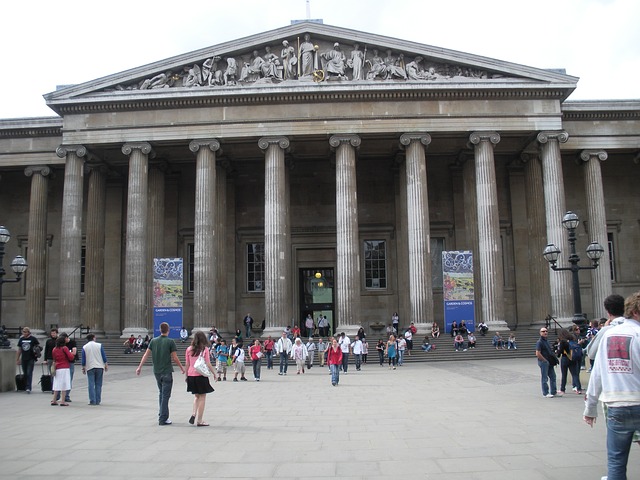British Museum
The British Museum first opened to the public in 1759 to promote a better understanding of the arts, natural history and science. Now one of the world’s finest museums, it contains a mind−boggling six million artefacts from all corners of the globe, plucked (or plundered) by collectors.
With antiquities documenting the rise and fall of civilisations from all over the world, highlights include such gems as the Rosetta Stone, a copy of the Magna Carta and the Elgin Marbles.
The spectacular Great Court, with its impressive glass roof, was opened in 2000, following the relocation of the British Library to St Pancras, and is the largest covered public square in Europe.
The awesome scale of the museum means it is essential to select just a few of the 94 galleries for close attention.
90−minute “Highlight” tours are available daily at 10:30, 13:00 and 15:00.
What to see at the British Museum
The museum’s huge collection is divided into separate wings according to geographical areas:
Ancient Egypt
The museum has the largest and most comprehensive collection of Egyptian antiquities outside the Cairo Museum. Together, the objects illustrate all aspects of the cultures of the Nile Valley, spanning more than 10,000 years.
The museum has seven permanent galleries on Egypt. On the top floor is the collection of 140 mummies and sarcophagi, including animal mummies. This is a very popular area of the British Museum.
Ancient Greece and Ancient Rome
The museum’s collection of ancient Greek artefacts includes, in addition to the Parthenon sculptures, items from two of the Seven Wonders of the Ancient World. On the ground floor, the galleries present the monuments and architectural pieces. On the upper floor there are smaller pieces from Italy, Greece, Cyprus and the Roman Empire.
Asia
The collection of over 75,000 objects covers cultures from across the Asian continent – from India to China, the Middle East to Japan – from the Neolithic to the present day.
Highlights include an important collection of sculpture from the Indian subcontinent, objects from China including antiquities, paintings, porcelain, ceramics and other applied arts, and the most comprehensive collection of pre-20th century Japanese art in the West.
Europe
The rooms on the upper floor of the museum are devoted to Europe. Each room covers a particular period, from prehistory to the present day. This gallery features the Sutton Hoo collection, with objects from an archaeological site in Suffolk, England.
Two ‘cemeteries’ dating from the sixth and seventh centuries AD were discovered at the site. In one of them is a wooden funeral boat containing a wealth of Anglo-Saxon objects of great historical, archaeological and artistic importance.
The most important item is an iron ceremonial helmet with copper alloy panels, which may have belonged to an Anglo-Saxon king.
Middle East
On the ground floor there is a magnificent exhibition of Assyrian sculptures and treasures. One of the highlights of the British Museum is the bas-reliefs depicting lion-hunting scenes, part of the world’s largest collection of Mesopotamian antiquities outside Iraq.
On the upper floor, the rooms are devoted to the Islamic world, and the rooms include objects from Mesopotamia, Persia, the Arabian Peninsula, Anatolia, the Caucasus, parts of Central Asia, Syria, the Holy Land, and others from prehistory, including objects from the beginning of Islam in the 7th century.
One of the highlights is the “Oxus treasure”: about 180 small gold and silver objects from ancient Iran.
Africa
The downstairs hall contains three galleries – the Sainsbury African Galleries – which display 600 objects from the world’s largest permanent collection of African art and culture, comprising over 200,000 pieces.
Highlights include bronze sculptures from Benin and the Head of Ife, a bronze sculpture of the head of a Yoruba ruler.
Americas
The Americas collection consists mainly of pieces from the 19th and 20th centuries, but the Inca, Maya and Aztec cultures are also represented. The room is devoted to North America and the room to Mexico, with the highlight being a sculpture of a two-headed snake in turquoise mosaic.
Video
How to get to the British Museum
Entry is free but there is a charge for some temporary exhibitions.
Nearest Tubes: Russell Square, Holborn, Tottenham Court Road, Goodge Street

